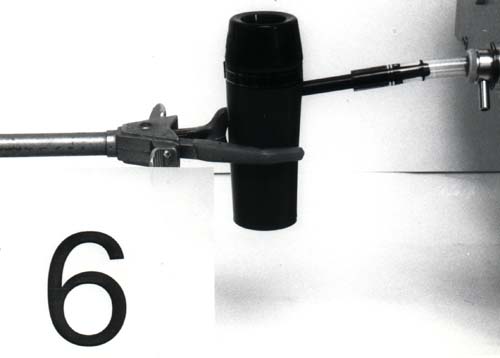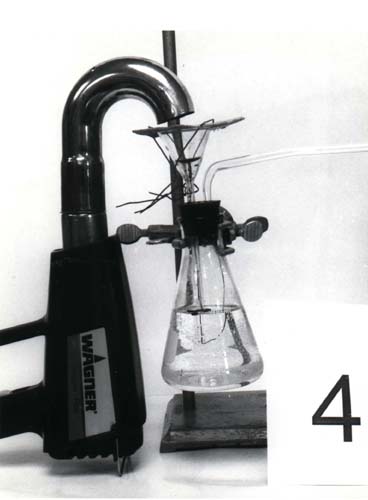-
Joint, pipa, bong – vilket är bäst?

Contrary to popular impression, waterpipes don’t necessarily protect smokers from harmful tars in marijuana smoke, according to a new study sponsored by MAPS and California NORML (National Organization for the Reform of Marijuana Laws).
The reason is that waterpipes filter out more psychoactive THC than they do other tars, thereby requiring users to smoke more to reach their desired effect.
The study does not rule out the possibility that waterpipes could have their benefits, such as filtering out gases, but it suggests that other methods, such as the use of high potency marijuana, vaporizers, or oral ingestion are needed to avoid harmful toxins in marijuana smoke.
Seven Devices Tested
The study, which was supported by the Drug Policy Foundation and private donors, was conducted at a research lab with expertise in the analysis of various chemical properties of tobacco and marijuana. Researchers tested the smoke from seven different sources: a regular rolled joint, a joint with a cigarette filter, three different waterpipes, and two vaporizers, designed to heat marijuana to a temperature where psychoactive vapors form without producing smoke.
The waterpipes included a standard bong, a small portable device with a folding pipestem, and a battery-operated model with a motorized paddle to thoroughly mix the smoke in the water. The first vaporizer, commercially produced in Canada, consisted of a battery-powered metal hot plate inside a jar to trap the marijuana vapor. The second was a homemade, hybrid apparatus, in which vapors were produced by a hot air gun and then drawn through a beaker of water, thereby combining vaporization with water filtration. The smoke was produced from standard NIDA-supplied marijuana drawn through a smoking machine adjusted to mimic the puff length of marijuana smokers.
Cannabinoid/Tar Ratio
The study focused on two key components of the smoke: (1) total solid particulates, or tars, which are noxious waste by-products of burning leaf like those from tobacco; and (2) cannabinoids, the chemicals distinctive to marijuana, including its major psychoactive ingredient, delta-9-tetrahydrocannabinol (THC), and its two commonest chemical relatives, cannabinol (CBN) and cannabidiol (CBD), which are only weakly psychoactive but may have medical benefits.
Like tobacco, marijuana tars are rich in carcinogenic compounds known as polycyclic aromatic hydrocarbons, which are a prime culprit in smoking-related cancers. However, cannabinoids themselves are not carcinogenic. An obvious way to protect smokers’ health is therefore to minimize the content of smoke tars relative to cannabinoids.
One way to do this is to increase the THC potency of the marijuana. Assuming smokers adjust their smoke intake to the cannabinoid dosage, the higher the concentration of cannabinoids, the lower the amount of tars they are likely to consume.

Another strategy is to try to reduce the tars in the smoke with some kind of filtering device. Obviously, this is beneficial only to the extent that THC isn’t also reduced, thereby inducing users to smoke more to compensate. A major aim of the study was to determine the efficacy of various smoking devices at reducing the concentration of tars relative to cannabinoids. The performance of each device was accordingly rated in terms of the cannabinoid-to-tar ratio in its smokestream.
Joints and Waterpipes
Surprisingly, the unfiltered joint outperformed all devices except the vaporizers, with a ratio of about 1 part cannabinoids to 13 parts tar. This disturbingly poor ratio may be explained by the low potency of the NIDA-supplied marijuana used in the study, which was around 2.3%.

Disappointingly, waterpipes performed uniformly worse than the unfiltered joint. The least bad waterpipe, the bong, produced 30% more tar per cannabinoids than the unfiltered joint. Ironically, the pipe with the electric mixer scored by far the worst of any device. This suggests that water filtration is actually counterproductive, apparently because water tends to absorb THC more readily than noxious tars. Like the waterpipes, the cigarette filter also performed worse than the unfiltered joint, by about 30%. Researchers speculate this is because cannabinoids are exceptionally sticky and adhere to other solids. Hence, any filtration system that picks up particulates is likely also to screen out cannabinoids.
Vaporizers
The vaporizer results appeared more promising, but confusing. The two were the only devices to outscore unfiltered joints in terms of raw cannabinoid/tar ratio. The electric hotplate vaporizer did best, with a performance ratio about 25% higher than the unfiltered joint. The hot air gun was just marginally superior, but might have done better had it not been for its water filtration component.

However, the situation was complicated by the fact that the cannabinoids produced by the electric hotplate vaporizer were unusually high in CBN, leaving 30% less THC as a percentage of the total cannabinoids than with the other smoking devices. Since CBN is not psychoactive like THC, recreational users might be expected to consume more smoke to make up for the deficit. (The situation may be different for medical users, who could experience other, medicinal benefits from CBN). For this reason, it seemed advisable to recompute the performance efficiencies of the vaporizers in terms of THC, rather than all cannabinoids. When this was done, theelectric hotplate vaporizer turned out to have a lower THC/tar ratio than the unfiltered joint, while the hot air gun was still marginally higher.

The reason for the excess CBN from the hotplate vaporizer remains unexplained. Because CBN is produced from THC by chemical oxidation, it has been suggested that the device somehow exposed the sample to too much oxygen. However, there is no evidence that this was the case. As for the second, hybrid vaporizer, it seems likely that its performance could have been improved by deleting its water component.
The results clearly indicate that more developmental work needs to be done on vaporizers. Theoretically, an ideal vaporizer could minimize production of tars by holding the temperature above the point at which THC vaporizes, but below that where carcinogenic hydrocarbons are produced by combustion. In practice, both vaporizers produced over ten times more tars than cannabinoids, indicating that there is plenty of room for improvement.
In the late 1970s, a vaporizer known as the Tilt appeared on the market. According to the manufacturer, laboratory tests showed that it released 80% more THC and 79% less tar than a regular pipe, a performance ratio almost ten times better than any observed in this study.
It is to be hoped that these impressive results can be replicated in the future. Unfortunately, the Tilt was withdrawn from the market in the early 1980s due to the passage of anti-paraphernalia laws.As for waterpipes, the prospects for improvement appear more dubious. It has been suggested that the performance of waterpipes could be improved by using liquids other than water or by changing the temperature of the liquid. However, it seems doubtful whether such tactics would circumvent the basic problem of separating the tars from the sticky cannabinoids.
Are Waterpipes Counterproductive?
The study results are obviously discomforting to waterpipe enthusiasts, many of whom prefer the cooler, milder smoke they produce, and have naturally assumed it is also more healthful. Unfortunately, however, the study indicates that waterpipes may actually be counterproductive in increasing consumption of carcinogenic tars.
Nonetheless, it is still premature to judge that waterpipes are actually unhealthful, since they may filter out other, non-solid smoke toxins occurring in the gas phase of the smoke, which was not analyzed in the study. Noxious gases known to occur in marijuana smoke include hydrogen cyanide, which incapacitates the lung’s defensive cilia; volatile phenols, which contribute to the harshness of the taste; aldehydes, which promote cancer; and carbon monoxide, a known risk factor in heart disease.
Previous studies indicate that water filtration may be quite effective in absorbing some of these [Nicholas Cozzi, Effects of Water Filtration on Marijuana Smoke: A Literature Review, MAPS Newsletter, Vol. IV #2, 1993]. If so, waterpipes might still turn out to have net health benefits.
MAPS and California NORML are planning to undertake a second phase of the waterpipe study for the purpose of analyzing the gaseous phase of Marijuana smoke.
In the meantime, the easiest way for most smokers to avoid harmful smoke toxins may be simply to smoke stronger marijuana. This strategy is apt to be more effective than any smoke filtration device. By simply replacing the low, 2.3% potency NIDA marijuana used in this study with high-quality 12%-sinsemilla, smokers could presumably reduce their tar intake by a factor of five while still achieving the same effect. Further improvements could be had by using pure THC or hash oil, which has been tested at potencies of 60%.
The notion that high-potency marijuana is less harmful directly contradicts official government propaganda, which maintains that marijuana has become more dangerous since the ’60s due to increased potency. This claim appears to rest less on scientific evidence than on the desire to frighten the public. A careful analysis of government data by Dr. John Morgan has shown that the supposed increase in potency has been greatly exaggerated [American Marijuana Potency: Data Versus Conventional Wisdom, NORML Reports (1994)]. In any case, however, there is no good reason to presume that higher potency marijuana is more harmful, given the potential respiratory benefits of reduced smoke consumption. The hazards of excessive potency are purported to be an increased risk of acute overdose and greater susceptibility to dependency. However, both problems can be avoided if users adjust their dosage to potency. For most users, such hazards may well be outweighed by the benefits of reduced smoke consumption.
Research in Australia
The Australian government is currently conducting another study that may ccast further light on the effects of potency variations. The study is designed to determine baseline THC, tar, and carbon monoxide levels from marijuana and marijuana-tobacco mixtures smoked through joints and waterpipes. The samples being tested come from police seizures in six different Australian states. Researchers say that they have observed “incredible” variations in tar and THC potency among different samples. Their report is expected shortly.
THC Transfer Rate
The MAPS-NORML study provides new information on the efficiency of different devices in delivering THC from marijuana to the user. Previous studies have shown that 60% – 80% of the THC burned in joints or waterpipes is lost in slipstream smoke, adhesion to the pipestem and bowl, pyrolysis, etc. [Mario Perez-Reyes, Marijuana Smoking: Factors that Influence the Bioavailability of Tetrahydrocannabinol, in C. Nora Chiang and Richard Hawks, ed., Research Findings on Smoking of Abused Substances, NIDA Research Monograph 99, 1990]. The percentage of total THC delivered to the user is called the THC transfer rate. The unfiltered joint scored surprisingly well in smoking efficiency, coming in second place with a transfer rate close to 20%. The portable waterpipe did slightly better, and the bong slightly worse. The other devices did notably worse. The vaporizers and electric waterpipe did especially poorly, with transfer rates less than one-third that of the top three devices. Thus, heavy smokers could literally be blowing most of their stash away with bad pipes.
Contrary to the initial version of this article, which erroneously stated that THC vaporizes at 155C, the Merck Manual lists the vaporization point of THC as 200C in vacuum. The vaporization point at normal atmospheric pressure appears to be unknown, but is thought to be in the range 250-400C.
[ allt klippt rakt från: MAPS.org
Log in to reply.
